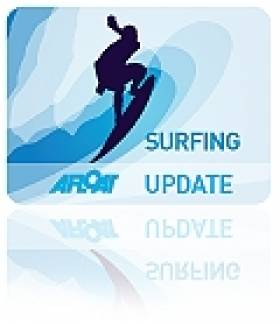Displaying items by tag: underground
More Research Needed On Galway Bay's Underground Rivers
#GalwayBay - Further research is needed to find out the full extent of the newly discovered underground rivers beneath Galway Bay that have surprised scientists since the discovery was announced a month ago.
Mail Online reported on researchers' claims that the sea bed off Galway could be hiding one of the world's largest networks of freshwater aquifers running between the limestone plains of the Burren and the Aran Islands.
The discovery was only made after locals on Inis Meáin talked of a freshwater well that never went dry - and an investigation by NUI Galway researchers estimated that its source must be on the mainland.
Now geologists think the discovery could be just a fraction of a vast network of underground caverns and waterways, according to The Irish Times.
And the find could prove to be a solution to the problem of chronic water shortages on nearby Inis Oírr, if the aquifers can be tapped for fresh water.
Surfing's World Body to Roll Out Drug Screening
#SURFING - The world governing body for surfing is set to roll out drug screening for competitors and officials at its sanctioned events this year.
As The Guardian reports, the move by the Association of Surfing Professionals (ASP) comes after the drug-related death of top surfer Andy Irons in November 2010.
The former three time world champion was found to have died from a hart attack combined with "acute mixed drug ingestion".
Irish surfer Gerry Fitzgerald told the paper that drug-taking is "not sustainable" for top-level surfers on the circuit. "Athletes are training hard, the way the contests are now, it will catch up with you," he said.
Testing for performance-enhancing and recreational drugs is already carried out at a number of professional events in the UK and Ireland, according to This Is Cornwall.
Matthew Knight of the steering committee for the British Surf Championships welcomed the change, admitting that surfing had been a "dinosaur" in its approach to drug testing and needed to catch up with other sports.
However some concerns have been raised that the move could damage surfing's credibility as an 'underground' phenomenon.
"Part of its appeal is that it is counter-cultural, marginal and in some way subversive and that's where the association with drugs comes in, whether real or mythic," surfer and author Andy Martin told The Guardian. "How mainstream can surfing be before losing its soul?"































































